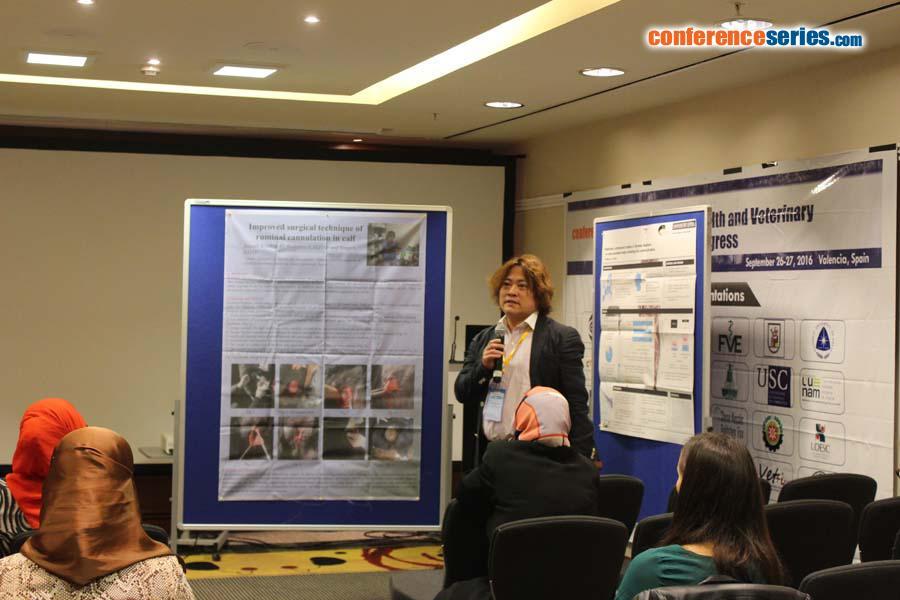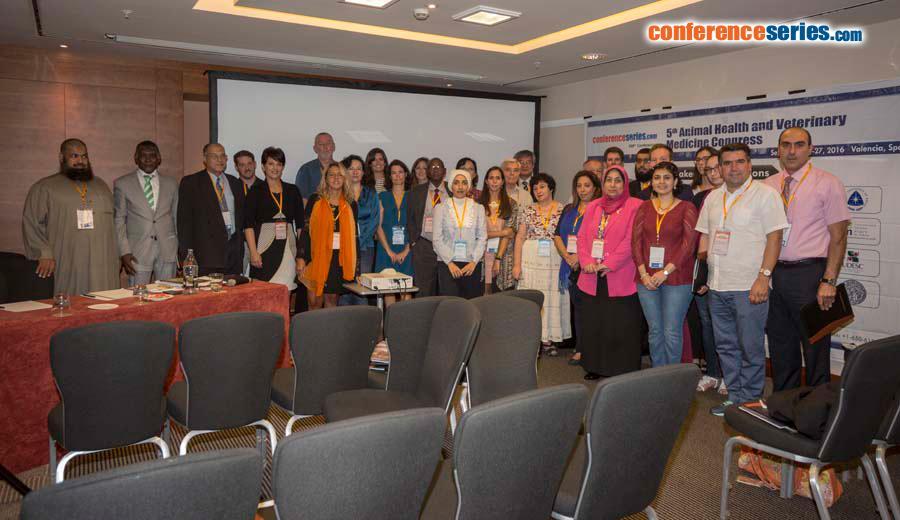
Atsushi Kimura
Morioka-Chiiki Agricultural Mutual Aid Association
Title: Improved surgical technique of ruminal cannulation in calf
Biography
Biography: Atsushi Kimura
Abstract
Introduction: Ruminal cannulation surgery is necessary to accurately investigate the continuous properties of ruminal juice. However, complications of this surgery include adhesion of organs and peritonitis due to ruminal juice leakage into the abdominal cavity of the cattle. Consequently, cattle may not be fit for continued experiments. In addition, there is little information of ruminal cannulation surgery in calf. Thus, we developed a procedure to improve this surgical technique and have described its application in calves.
Materials & Methods: 14 Holstein calves with a mean weight of 71.83±2.25 kg (mean±SE) were used. Each calf was fitted with a ruminal cannula with 3.5 cm central diameter, 15 cm largest diameter, and 5 cm body wall thickness. Surgical steps were as follows: 1) Each calf was completely shaved behind the left rib, and the skin was marked in accordance with the internal diameter of the cannula; 2) For sedation, 2% xylazine was administered through the caudal epidural space, and the surgical site was anesthetized using a local anesthetic; 3) Using a scalpel, the skin and muscle were carefully excised along the marker to incise the peritoneum; 4) Simple ligation was performed between the muscle and peritoneum at four locations (3, 6, 9, and 12 o’clock positions); 5) Additional ligation was performed between the peritoneum, muscle and skin at four to six locations; 6) An antibiotic was injected into the abdominal cavity; 7) The rumen was pulled out of the body and carefully incised to avoid ruminal juice leakage; 8) The ruminal serous membrane surface and skin were ligated at approximately 10 locations starting from the 6 o’clock position; 9) The site of operation was washed
with antibiotic-containing saline; and 10) The cannula, which became soft in hot water was inserted.
Results & Discussion: Our procedure improved ruminal cannulation surgery in calves by preventing ruminal juice leakage into the abdominal cavity, thereby avoiding peritonitis. Good animal health was confirmed by monitoring appetite and conducting blood biochemistry tests. Autopsy findings indicated that the skin, muscle, peritoneum, and rumen formed adhesions in a ring shape, but no other adhesion was observed in the abdominal cavity. Improved surgical procedure in this study can help avoid complications associated with ruminal cannulation surgery and keep the calf fit for continued rumen research.



